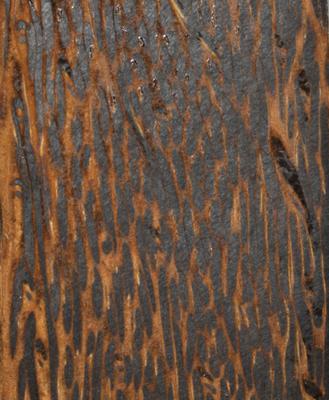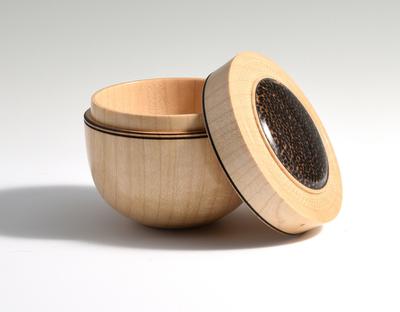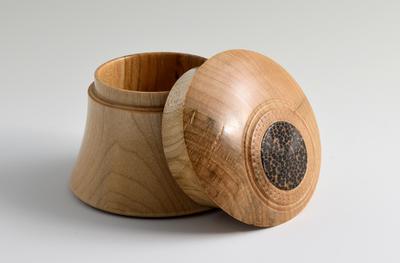Black Palm (Borassus flabellifer)
Description
Black palm is native to tropical Africa and Asia but has been widely planted outside of this range as a crop for nuts, sap and palm leaves. Black palm grows to about 20 m in height and 1 m in diameter. Although black palm trees can grow to substantial sizes, the usable wood is confined to the outer margins of the log. The inside of logs is always soft, punky and watery. As a result, black palm is typically only available in narrow boards or spindle blanks.
Unlike most other woods, black palm is a monocot, meaning that it is actually more closely related to grass and bamboo than either hardwood or softwood trees. As a result black palm does not have growth rings, medullary rays, knots, or figure that characterize virtually every other type of wood, and there is virtually no difference in the appearance of quarter sawn and plane sawn surfaces. The wood of the black palm is made of black fibres in a tan or light brown parenchyma tissue. The structure of the wood is most evident on the end grain where the fibres appear as black dots on a lighter back ground.
The wood itself is considered to be fine to medium in texture, but it does vary widely from tree to tree, and even within a single tree. It can be difficult to work or turn as the black fibres often pull or tear out of the softer parenchyma tissue, leaving a ragged or torn surface. Stabilization can improve the working characteristics of black palm considerably.
Within its native range black palm is commonly used for flooring, furniture, framing and turning. It is generally used in other parts of the world as a decorative accent or for decorative objects such as knife scales, tool handles, musical instruments and inlay. When used properly, black palm can produce striking effects, especially the dotted end grain.
Also known as:
- Palmyra Pal
- Coconut
- Porcupine Tree
For further information see:





